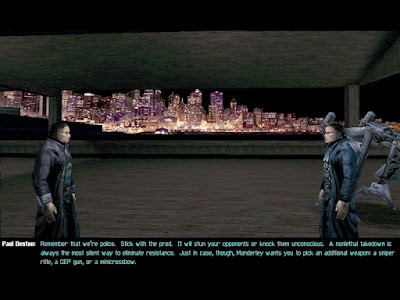The 2012 Summer Olympics have been going for a few days now, and it's difficult not to stop and take note of the athleticism and single-minded dedication of the participants. At the Olympic Games sports are elevated somehow, from a pleasant diversion to an ancient struggle of man versus man, and man versus nature. Yet not all sports are created equal -- I'm looking at you, handball. So maybe the Games need an infusion of new sports. But how to choose among the hundreds of sporting events in the world, some more reputable than others -- I'm looking at you, cheese-rolling.
Well, since this is a video game blog, you can probably guess where I'm going with this. Yes, video games can be the inspiration for a new slate of Olympic sports. And why not? Olympic sports have been the inspiration for many video games: Nagano Winter Olympics '98, Mario & Sonic at the Olympic Games, etc. It's time for some reciprocation.
And so, without further ado, I present the Olympic (Video) Games.
How is this not an Olympic sport already? I think people would pay top dollar to see their countrymen hurl giant rubber balls at opposing players. Plus it would require speed, stamina, strength, and a good amount of team strategy. Would this Olympic sport follow exactly the rules of the NES game Super Dodge Ball, where players can be hit multiple times before they're declared "out"? I'm not sure. I'll leave that up to the IOC.
Well, since this is a video game blog, you can probably guess where I'm going with this. Yes, video games can be the inspiration for a new slate of Olympic sports. And why not? Olympic sports have been the inspiration for many video games: Nagano Winter Olympics '98, Mario & Sonic at the Olympic Games, etc. It's time for some reciprocation.
And so, without further ado, I present the Olympic (Video) Games.
5. Super Dodge Ball
from
Super Dodge Ball
 |
| Super Dodge Ball, 1988 |
How is this not an Olympic sport already? I think people would pay top dollar to see their countrymen hurl giant rubber balls at opposing players. Plus it would require speed, stamina, strength, and a good amount of team strategy. Would this Olympic sport follow exactly the rules of the NES game Super Dodge Ball, where players can be hit multiple times before they're declared "out"? I'm not sure. I'll leave that up to the IOC.
4. Skydiving
from
Wii Sports Resort
 |
| Wii Sports Resort, 2009 |
OK, so skydiving would present a few more logistical headaches than most Olympic sports. As in Wii Sports Resort, contestants would attempt to link hands as they're falling through the sky. I imagine judges would award points based on style, duration of linkage, level of difficulty, creativity, etc. This would be the team competition. But there could also be an individual competition, where skydivers try to maneuver themselves through floating rings. Of course the Olympics will need floating ring technology. How about it, science?
3. Monkey Race
from
Super Monkey Ball
 |
| Super Monkey Ball, 2001 |
Frankly, I think the picture above demonstrates the necessity of Monkey Race as an Olympic sport, but here's my pitch anyway. Modeled after the SEGA game Super Monkey Ball, in which a foursome of adorable primates rush through levels in enclosed spheres, Monkey Race would feature other adorable primates -- this time, humans -- racing against each other and the clock to push their spheres over grass, concrete, water, whatever! Alternative plan: gymnasts are placed in monkey balls as punishment for not landing that triple twist punch front, which, to be honest, was pretty routine.
2. Tetris
from
Tetris
 |
| Tetris DX, 1998 |
One of the most recognizable and beloved video games in history, Tetris, would make a pretty darn good Olympic sport if you ask me. Athletes would need quick thinking and deep focus to achieve high scores in Tetris, as tetrominos fell from above at an increasingly fast pace. The completed lines at the bottom of the board couldn't be digitally erased as in the original video game, so maybe they could just lower into the floor or onto a conveyor belt. I don't really know. I'm a gamer, not an engineer!
1. Mario Kart Racing
from
Mario Kart series
 |
| Mario Kart 64, 1997 |
The Olympics organizers might want some extra emergency staff nearby for this one. It's Mario Kart Racing, based on the insanely popular Mario Kart series. A total of eight racers (sorry Mario Kart Wii) compete on a variety of courses to win the grand prix. But it's not just the best racer who prevails, but also the shrewdest strategist, as all players can pick up offensive and defensive items from "item boxes" scattered throughout every course. Note: this may require relocating future Olympic destinations to banana-rich countries.


































